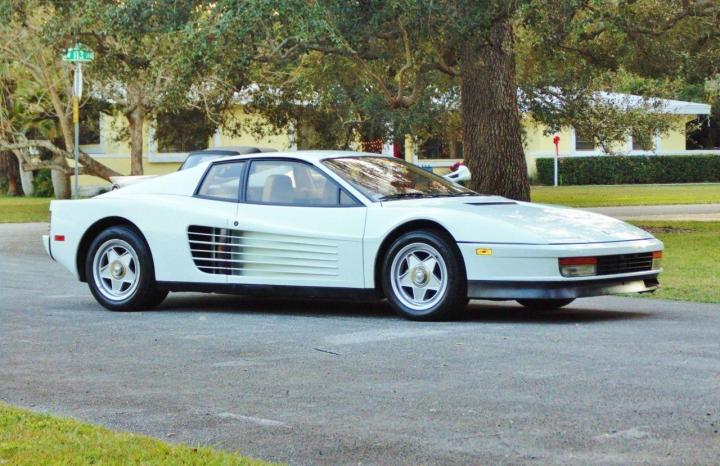
The car was made famous by appearing in the third season of the hit 1980s action series, becoming the ride of choice for undercover detective James “Sonny” Crockett, played by Don Johnson.
The story goes that in the earlier seasons, the “hero” car of the show was Crockett’s ’72 Ferrari Daytona Spyder 365 GTS/4, which in reality was a replica built for production on a Corvette chassis. Ferrari themselves caught wind of this, going so far as to file lawsuits against the replica carmakers who worked with the production, demanding they cease making knock-offs. The silver lining is that Ferrari offered two brand new Testarossas to be featured in the show instead.

Now, you’re probably thinking that you’ve seen this car go through seasons of chases, gunfights, and jumps so it can’t be in that great of a condition. You’ll be pleased to hear that the car has a mere 16,000 miles on it. The stunt cars that took all the abuse were re-bodied De Tomaso Panteras, so the Ferrari on the auction block was the princess on the set used for beauty shots and close-ups.
The Ferrari itself houses a 4.9-liter 12-cylinder engine that was capable of producing up to 390 horsepower in its heyday. Power was sent to the rear via a five-seed manual transmission. The sports car’s now-iconic design was born out of Ferrari mounting twin radiators to the side, focusing on crafting a efficient aerodynamic vehicle that produced downforce without the need for large wings.
As it stands, the car is currently available with a “buy it now” price of a cool $1,750,000, so those wanting to take this prize home might want to plan some yacht-themed drug caper in the next couple of weeks. In the meantime, dust off your copy of Don Johnson’s Heartbeat, lather on some Hawaiian Tropic tanning oil, and remember the outrageous eighties.


